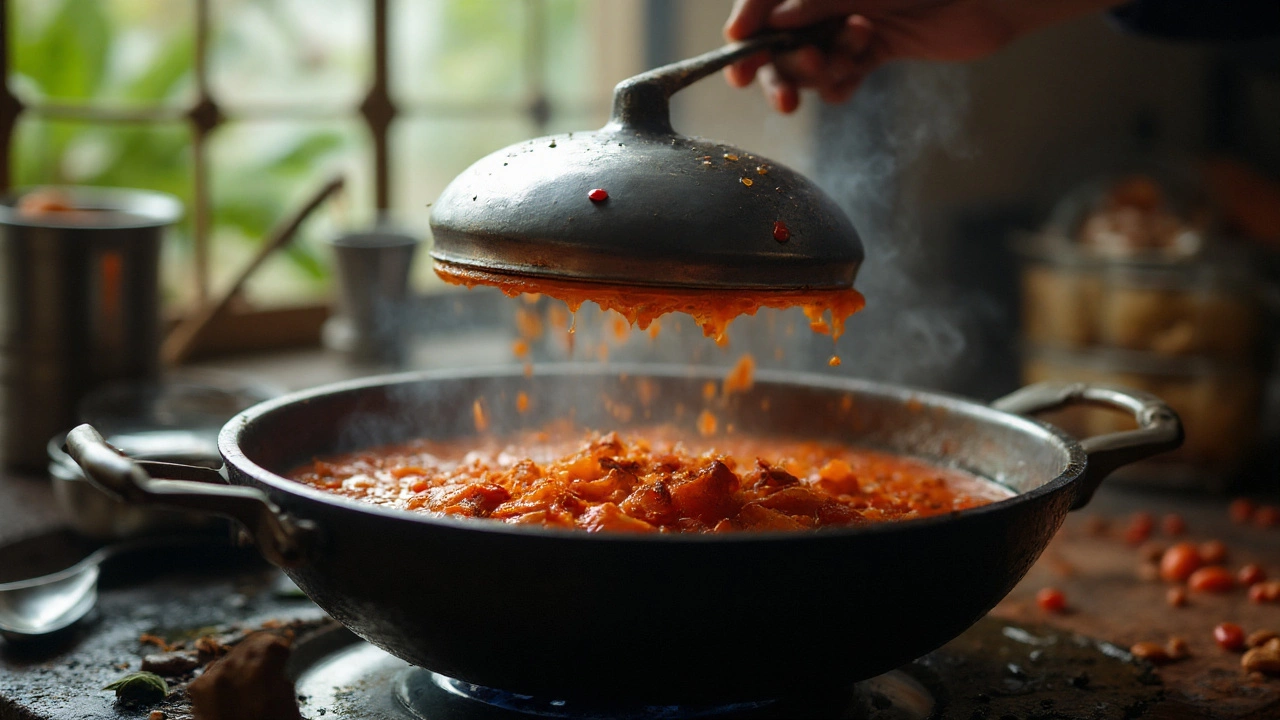Cook Chutney: Easy Steps, Best Pairings, and Simple Health Hacks
If you’ve ever wondered how to get that fresh, tangy burst on your plate, you’re in the right spot. Making chutney at home is quicker than you think and needs only a few pantry staples. Grab a bowl, follow these steps, and you’ll have a versatile sauce that lifts anything from dosa to grilled cheese.
Basic Ingredients and Quick Method
Start with a base of fruit or veg – cilantro, mint, tomato, mango, or even boiled potatoes work great. Add a splash of acid (lemon juice or vinegar), a pinch of salt, and a sweetener if you like (a teaspoon of jaggery or honey). For heat, throw in a tiny bit of green chilies or black pepper.
Blend everything in a food processor until you reach the texture you like – smooth, chunky, or somewhere in between. Taste and adjust: more salt if it feels flat, more lemon if it’s too heavy, a dash of water to loosen it up. That’s it – you’ve cooked chutney in under ten minutes.
Smart Pairings That Make Meals Pop
Chutney is a perfect sidekick. Drizzle cilantro‑mint chutney over steamed rice and a dollop of yogurt for a quick lunch. Spread mango chutney on a butter‑toasted sandwich for a sweet‑spicy twist. Use tomato‑onion chutney as a dip for samosas, pakoras, or even fried chicken wings.
Don’t stop at Indian dishes – try it with grilled fish, roasted vegetables, or as a topping for burgers. The bright flavor cuts through richness and adds a refreshing punch.
For a classic combo, serve coriander chutney alongside coconut chutney. The fresh herb notes balance the creamy coconut, creating a duo that works for any South Indian breakfast.
Want a quick snack? Toss a spoonful of your favorite chutney into plain popcorn. The result is addictive and completely unexpected.
Tip: Keep a small jar of chutney in the fridge; it stays good for about a week. If it thickens, just stir in a bit of water or extra lemon juice.
Now, a quick health check. Most chutneys are low in calories and packed with vitamins from the fresh ingredients. The acid helps with digestion, and the herbs bring antioxidants. Just watch the sugar if you add jaggery or honey – a little goes a long way.
If you’re watching sodium, use less salt and let the natural flavors shine. For a dairy‑free version, skip curd and stick to oil‑free blends; they’re lighter and still tasty.
Remember, the key to great chutney is balance. Too much acid makes it sharp, too much sweet turns it cloying. Adjust little by little, taste as you go, and you’ll nail the perfect harmony.
So next time you reach for ketchup or mayo, grab a spoonful of homemade chutney instead. It’s fresher, cheaper, and adds a world of flavor to everyday meals. Happy cooking!
Do You Cook Chutney With the Lid On or Off? Simple Rules for Perfect Thickness
Lid on or off for chutney? Clear rules for cooked, raw, and pressure-cooked chutneys. Stop splatter, nail thickness, and store safely-without guesswork.
